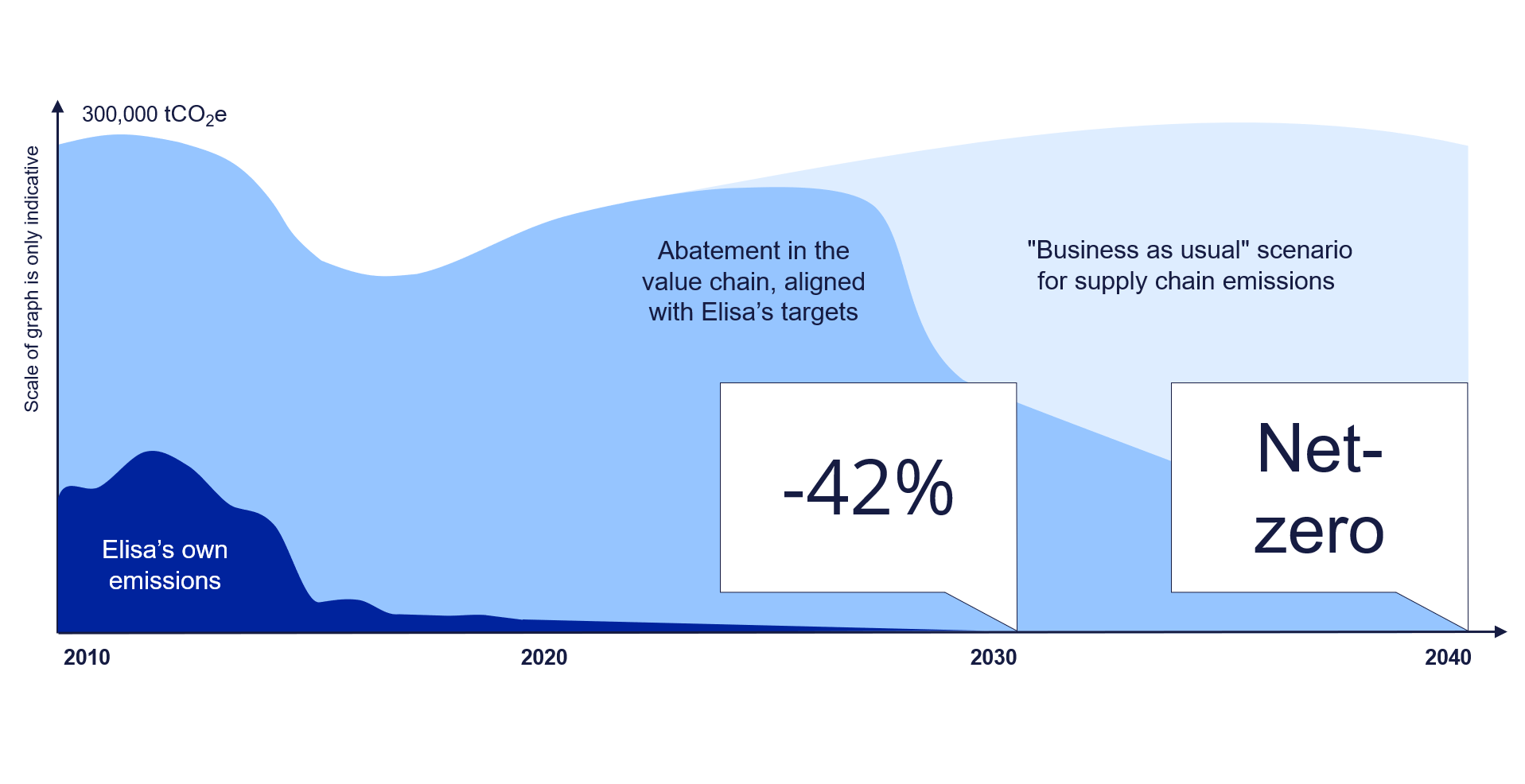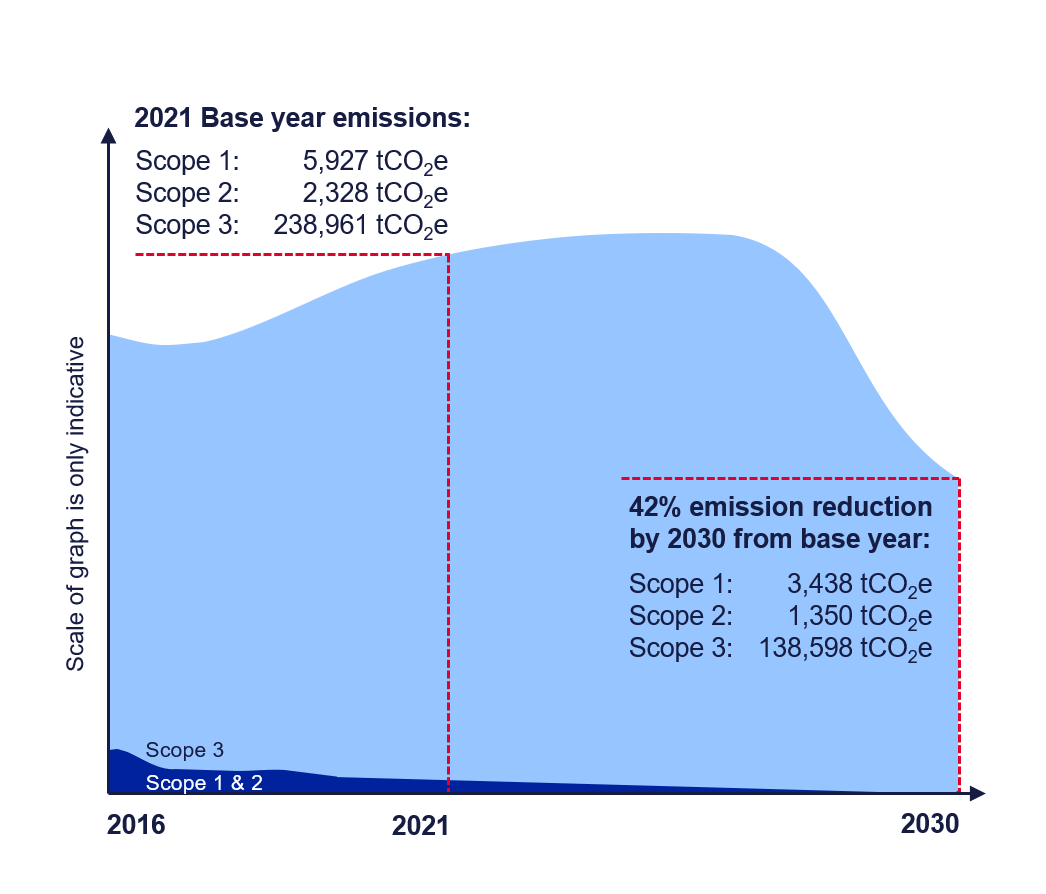We set a high ambition in our response to the climate crisis.
We take action, and engage others, to drive climate transition.
We demonstrate accountability through transparent disclosure.
In line with Elisa’s mission of a sustainable future through digitalisation, and thus accelerating the achievement of a carbon-neutral society, we have committed to the Paris Agreement to keep global warming to 1.5 °C.
We are driving Elisa’s ambitious, science-based climate targets with our Climate Transition Plan. The plan is intended for all stakeholders that need to understand our near-term and long-term approach to reducing carbon emissions throughout Elisa’s value chain. It guides the strategies and processes that impact the environmental sustainability of Elisa’s operations.
The climate transition should be just and fair, achieved through target-oriented collaboration, and safeguard natural ecosystems.
.jpg?fl=progressive&fm=jpg&q=80)

